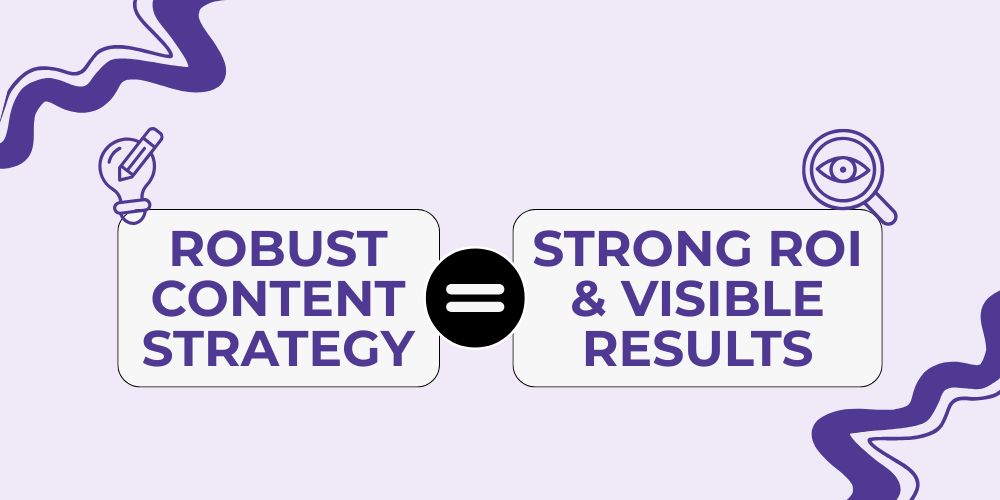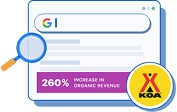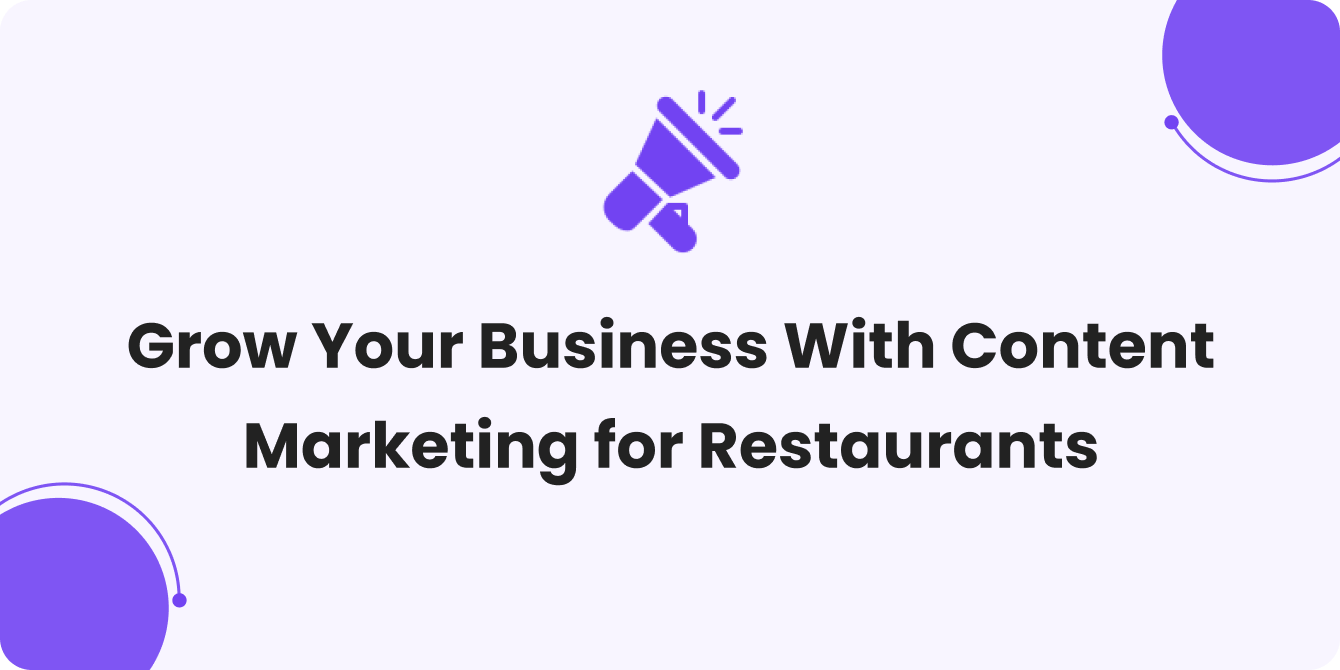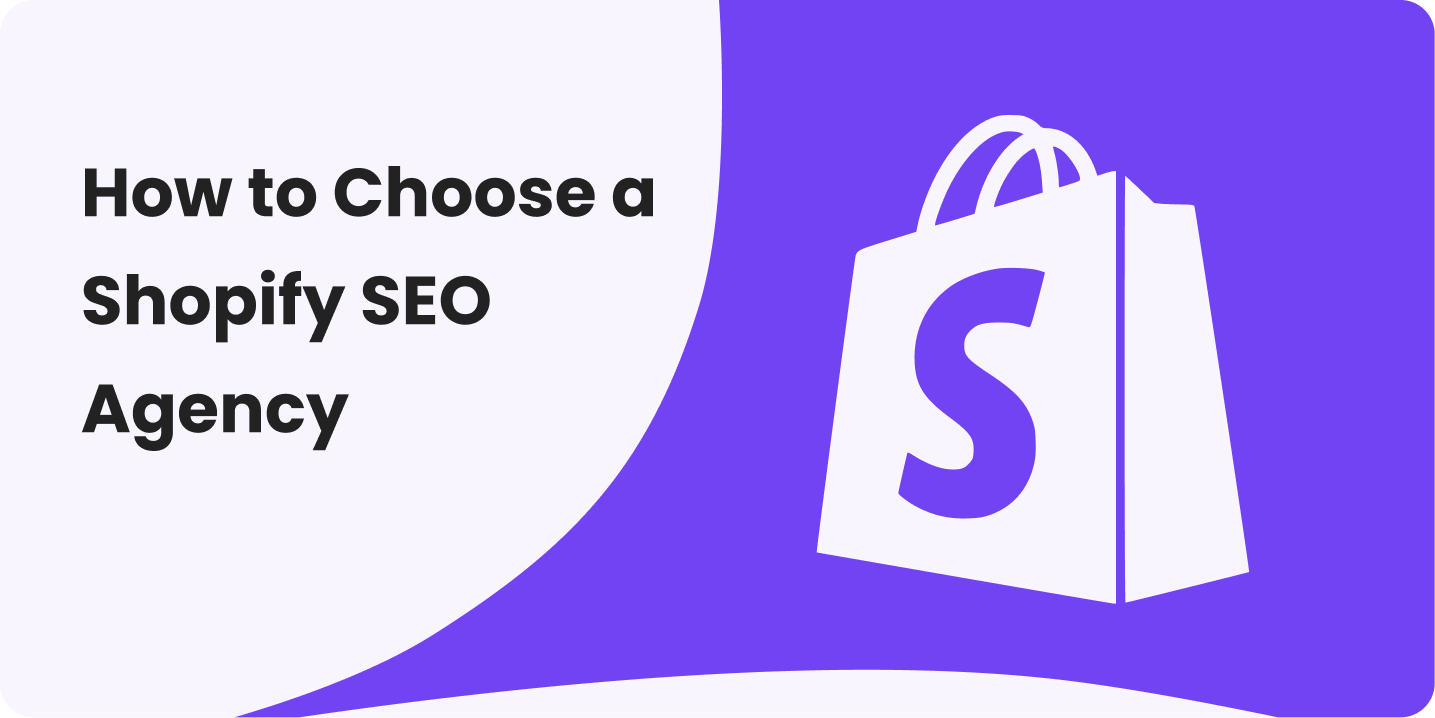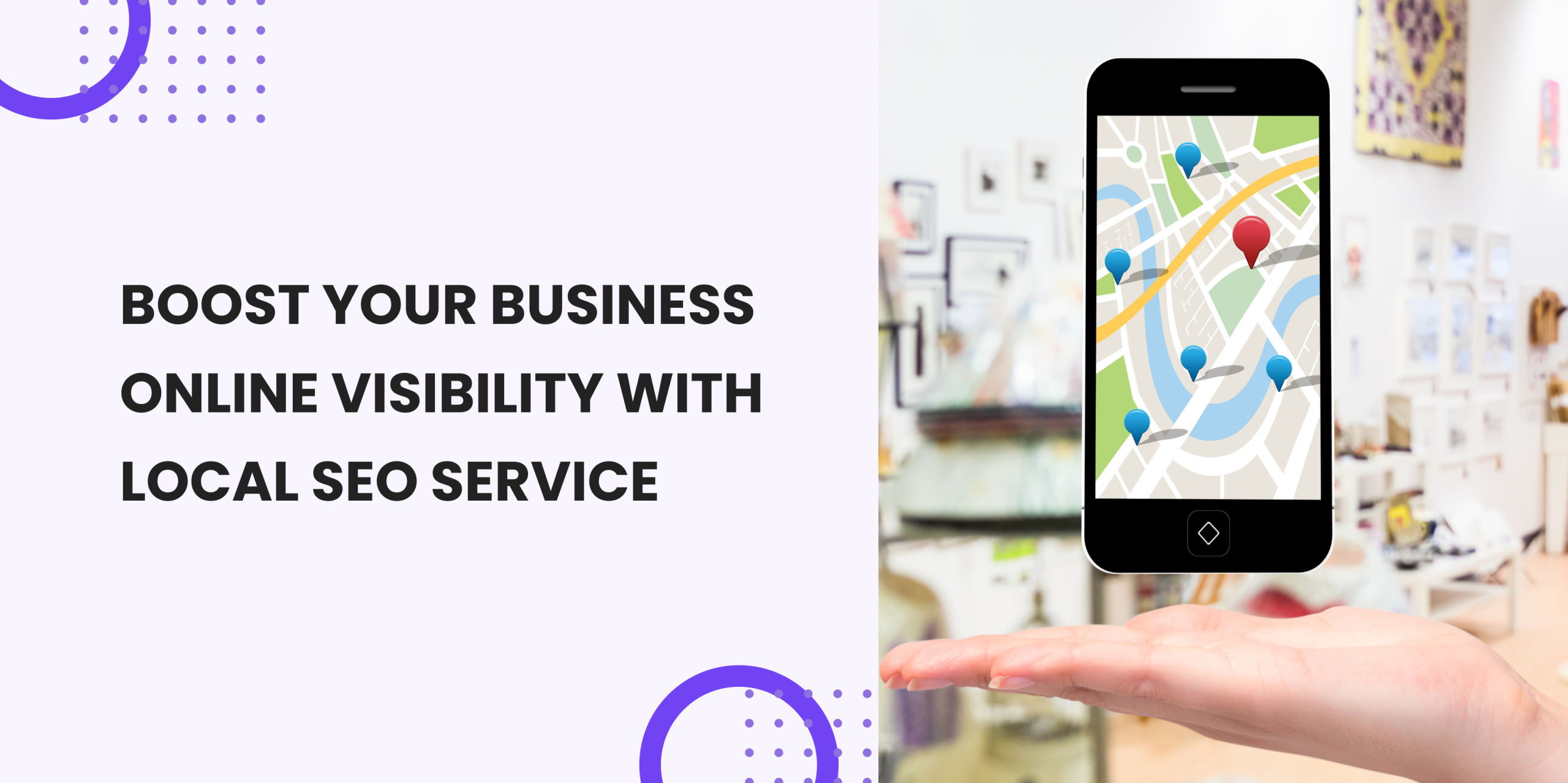Every brand has a story to tell, but not every brand can tell it effectively. In a digital world flooded with content, standing out isn’t just about producing more, it’s about producing the right content. A well-crafted content marketing strategy ensures that every blog post, video, or social media update serves a purpose, reaching the right audience at the right time.
Without a clear strategy, content creation can feel like a shot in the dark, time-consuming, inconsistent, and lacking results. But if you rely on a structured approach, all your problems find their solutions. By developing a content strategy, businesses can attract, engage, and convert their ideal customers with precision.
We’ll break down how to develop a content strategy that works. Whether you’re starting from scratch or refining an existing plan, these steps will help you create content that doesn’t just exist, but delivers real impact.
What Is Content Strategy?
Content is everywhere, but without a plan, it’s just noise. A content marketing strategy is the blueprint that ensures your content isn’t just random but purposeful, guiding potential customers from awareness to action.
It’s about creating and sharing valuable content that attracts, engages, and ultimately converts your target audience. Think of it this way; If marketing is the engine, then content is the fuel that keeps it running.
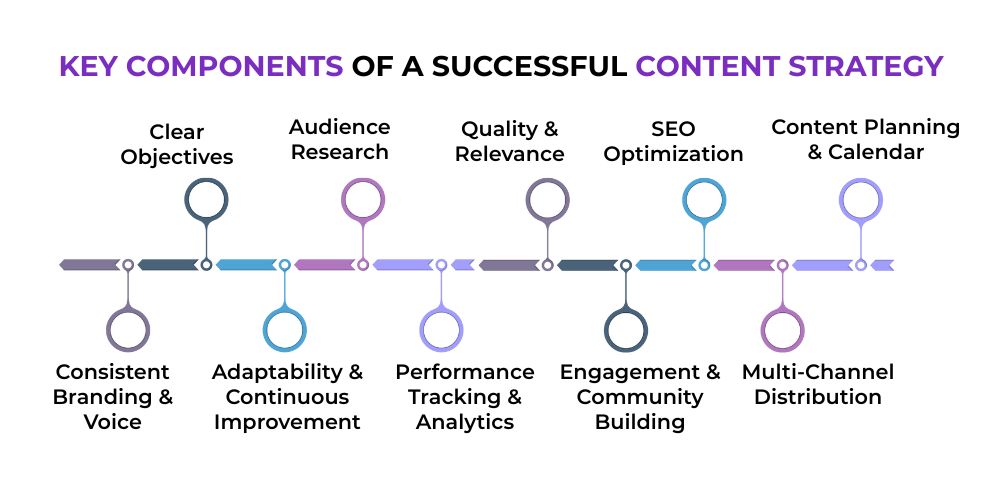
A well-structured content strategy ensures that every blog post, social media update, or email campaign moves you closer to your business goals. It’s not just about writing articles or posting videos; it’s about making sure that content is relevant, consistent, and impactful.
Why Is Content Strategy Important?
Without a plan, content marketing can feel scattered and ineffective. A well-planned content strategy ensures consistency, saves time, and increases impact. Instead of blindly creating content, you’ll have a structured approach that not only attracts your ideal audience but also nurtures and converts them.
But why does this matter so much? Let us tell you why:
- A solid content marketing strategy ensures that every blog post, video, or social media update serves a strategic purpose.
- A structured approach helps you demonstrate the ROI of your content efforts, ensuring you have the budget and resources needed to scale.
- A well-planned content calendar helps you organize, schedule, and distribute content efficiently, leading to no last-minute scrambling for topics, no redundant efforts, and a smooth workflow.
- A data-driven content marketing strategy enables you to track key metrics, from audience engagement to lead conversions.
How to Create a Content Marketing Strategy – The 9 Steps
Step 1: Set Clear Goals for Your Content Strategy
Great content isn’t just about filling up a blog, it’s about driving real business results. Before you create anything, you need to define why you’re creating it. Are you looking to increase brand awareness, attract leads, nurture existing customers, or drive conversions? Each goal requires a different approach.
For instance, if you aim to build authority, long-form research-based content like white papers and case studies works best. If you want to capture organic traffic, SEO-driven blog posts can boost visibility. On the other hand, social media content and email campaigns are perfect for engaging and converting customers.
The key is to set SMART goals, Specific, Measurable, Achievable, Relevant, and Time-bound, to ensure your strategy is data-driven and results-oriented. Clear goals will shape your entire content marketing strategy, ensuring that every piece of content serves a purpose and delivers impact.
Step 2: Understand Your Audience Inside Out
You can’t create an effective content marketing strategy without knowing who you’re speaking to. The best content resonates because it feels personal, it answers questions, solves problems, and speaks directly to the audience’s needs.
Start by building a customer persona, a detailed profile of your ideal audience. Consider their age, location, interests, and the content they already engage with. Are they professionals who rely on LinkedIn? Or Gen Z users scrolling TikTok? These insights will guide your content strategy and ensure you’re publishing where it matters most.
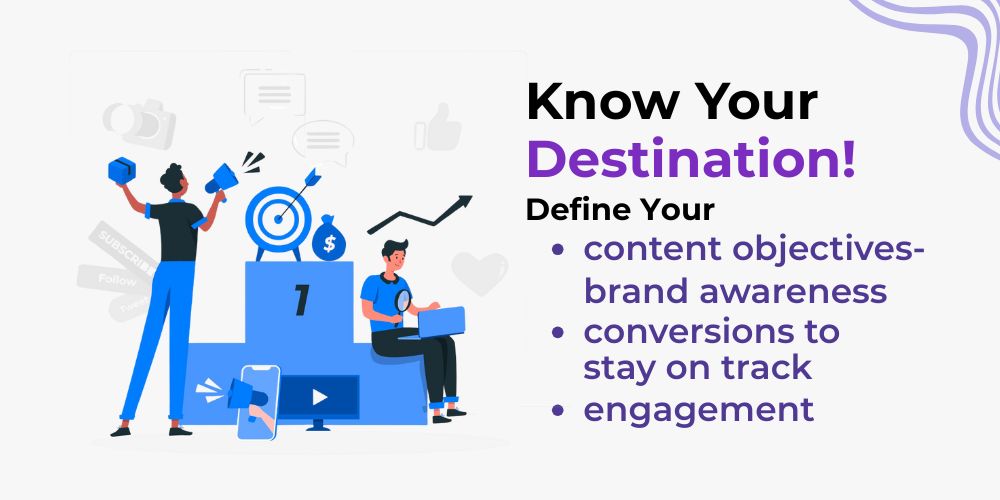
Leverage tools like Google Analytics, social media insights, and industry reports to analyze behavior, buying patterns, and preferred platforms.
To create content that attracts, engages, and converts, because when you truly understand your audience, your content strategy becomes a game-changer
Step 3: Evaluate Your Competitors’ Content Approach
Want to know what’s working in your industry? Look at your competitors. Analyzing their content marketing strategy helps you identify gaps, opportunities, and winning tactics.
Start by selecting four or five top competitors. Study their blog posts, videos, and social media content.
- What topics do they cover?
- What formats get the most engagement?
- Are they consistent with publishing?
Tools like Ubersuggest can reveal keyword gaps, topics they rank for that you haven’t covered yet. But don’t just focus on what they’re doing right. Look for content gaps, weak engagement, or missed opportunities. Are they too formal when a conversational tone works better? Are they neglecting certain content marketing channels?
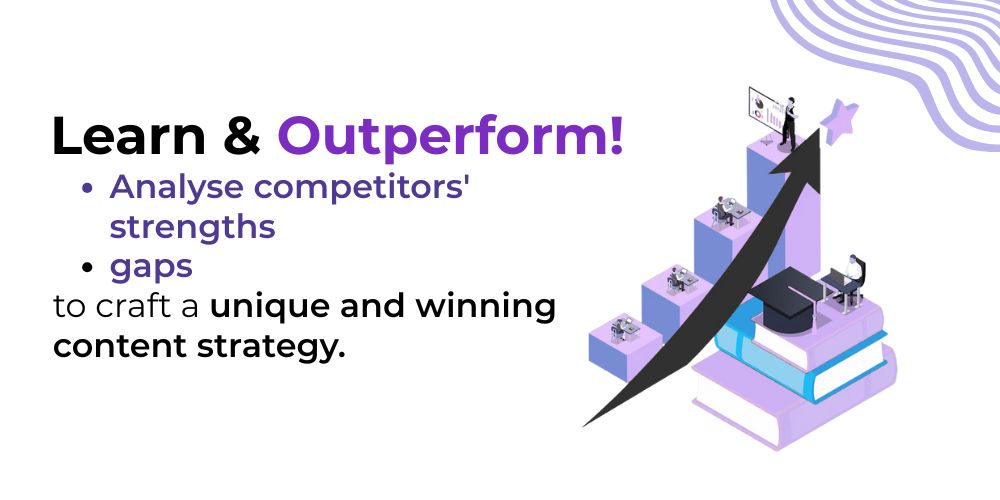
Use these insights to refine your own content marketing strategy, not by copying, but by improving. Take what works, avoid what doesn’t, and carve out a unique voice that stands out.
Step 4: Conduct a Thorough Content Audit
Creating content without assessing what’s already working is like throwing darts in the dark. A content audit helps you take stock of your existing content, uncover gaps, and optimize high-performing pieces to get even better results. Start by organizing all your content, blog posts, landing pages, videos, and social media updates into a spreadsheet.
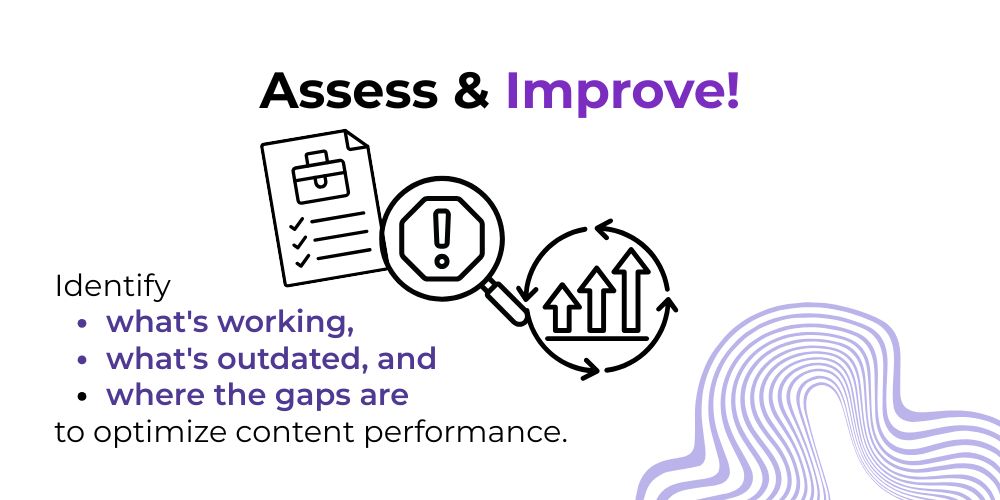
Evaluate each piece based on traffic, engagement, and conversions.
- Is it still relevant?
- Can it be updated with new data?
- Could it be repurposed into another format, like turning a blog post into a video?
A content marketing audit also helps eliminate duplicate or outdated content and identify new SEO opportunities. Refreshing old content with better keyword targeting can boost rankings and visibility. By refining what you already have, you’ll create a stronger, more effective content marketing strategy, without reinventing the wheel.
Step 5: Generate Content Ideas and Choose Formats
Now that you’ve laid the groundwork, it’s time to get creative. A strong content marketing strategy isn’t just about what you say, it’s about how you say it. Your content ideas should align with your business goals, fill content gaps, and most importantly, resonate with your audience.
- Start by brainstorming topics that answer your audience’s questions and solve their problems.
- Use keyword research, competitor analysis, and customer personas to guide your choices.
- Then, decide on the best content formats, should it be a blog post, a video, an infographic, or a podcast? Different formats cater to different preferences, so mix it up!
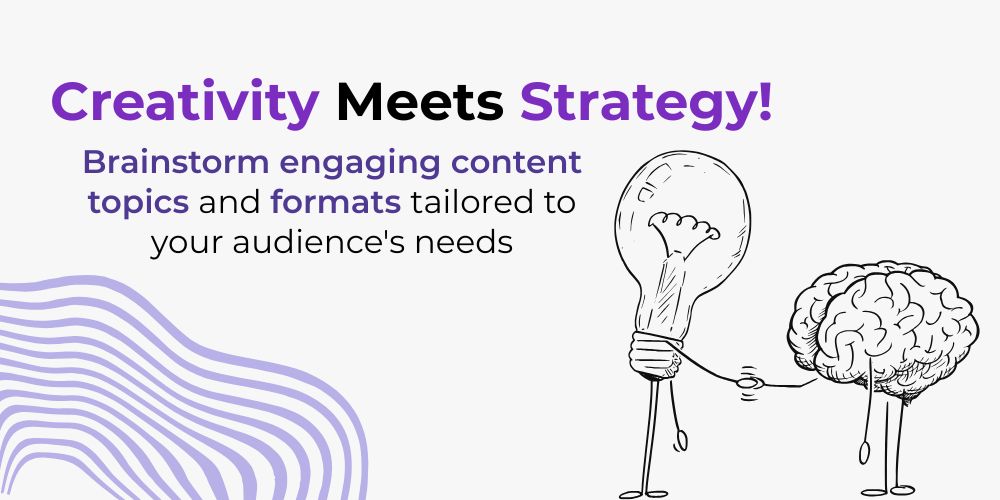
Think about how your content will fit into the best content marketing channels, whether it’s social media, email, or your website. By planning strategically, you’ll create content that not only attracts attention but also drives real engagement and results.
Step 6: Plan, Schedule, and Publish with a Content Calendar
Creating content is just half the battle, the real challenge is staying consistent. The problem finds its solution with creating a content calendar. It helps you plan, schedule, and publish content strategically, ensuring your efforts align with your business goals.
- Start by mapping out content for the next three to six months.
- Consider key dates like industry trends, holidays, and seasonal events that align with your audience’s interests.
- Balance your schedule by mixing quick-turnaround content (like blog posts and social media updates) with long-form pieces (like case studies and reports).
A structured content marketing strategy keeps your team organized and prevents last-minute scrambling. With a well-maintained calendar, you’ll ensure a steady flow of valuable content, keeping your audience engaged while maximizing efficiency. The goal? Less stress, more impact.
Step 7: Maximize Your Content’s Reach and Impact
A successful content marketing strategy isn’t just about publishing; it’s about strategically amplifying your message.
- Start by sharing your content across the best content marketing channels where your audience is most active, be it social media, email, or industry forums.
- Repurpose blog posts into bite-sized social media snippets, infographics, or even short videos.
- To maximize your reach team up with influencers and industry experts.
- Engage in relevant LinkedIn or Facebook groups (without being overly promotional).
Leverage email marketing to nurture leads, and don’t overlook paid promotions like Google Ads or social media boosts. Encouraging employees to share content also adds authenticity and expands visibility. Make your content work smarter, not harder, ensuring it reaches and engages the right people at the right time.
Step 8: Track and Analyze Content Performance
A successful content marketing strategy means knowing what works and what doesn’t for you. Tracking key metrics helps you refine your approach, ensuring your content strategy remains data-driven and impactful.
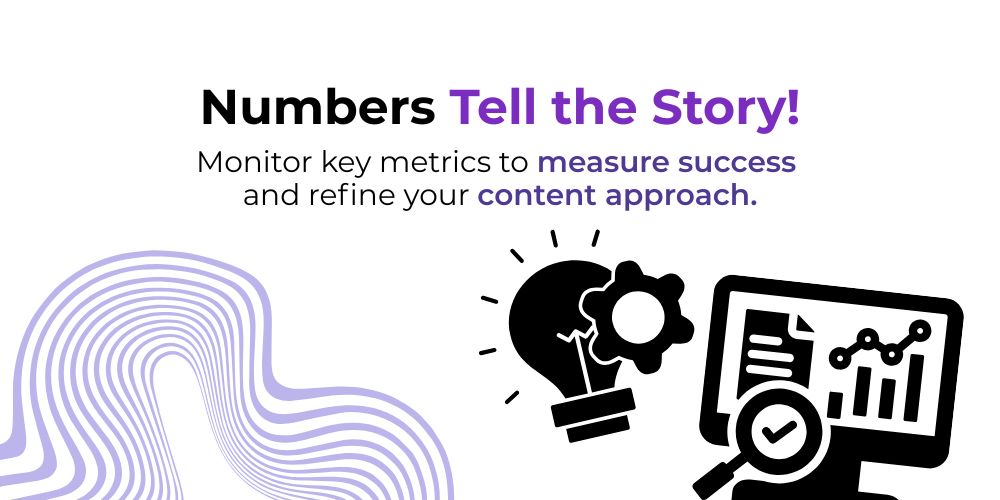
Audience Engagement Metrics
Are people actually consuming your content? Page views, time on page, and bounce rates indicate whether your content is resonating. A high bounce rate might mean your content isn’t relevant, while longer engagement times signal success.
Social Media Impact Metrics
Is your content being shared? Shares, comments, and social media traffic show how your audience interacts with your content. Use platform analytics or tools like Google Analytics to track social engagement and ROI.
Lead Generation Metrics
Great content should drive action. Track newsletter sign-ups, downloads, and form submissions to see how well your content converts visitors into leads.
Revenue and Sales Metrics
At the end of the day, content should contribute to sales. Conversion tracking, customer journeys, and revenue attribution show how your content influences purchasing decisions. By analyzing these metrics, you can continuously refine and amplify your content strategy for maximum impact.
Step 9: Gather Customer Insights to Refine Your Strategy
If you think you can create content without understanding your audience, then you might as well throw darts in the dark because you will never hit the target. To make your content marketing strategy truly effective, you need to listen, really listen, to what your customers are saying.
It’s vital to understand that we must choose different types of content to ace different stages of the buyer’s journey. A first-time visitor might need educational blog posts, while a ready-to-buy customer may respond better to case studies or testimonials.
The key is to deliver the right message at the right time. Use social media analytics, email engagement rates, and surveys to see what’s working. Which topics spark conversations? What formats get the most shares? Feedback isn’t just helpful, it’s the foundation for improving your content strategy.
The more you align content with audience preferences, the stronger your brand’s impact. Keep refining, keep optimizing, and most importantly, keep listening.
7 Best Content Marketing Channels
1. Blogs
Blogs are more than just articles, they’re the backbone of most successful content marketing efforts. Why? Because they let you educate, engage, and rank in search engines, all at once. Whether you’re sharing expert insights, answering customer questions, or showcasing thought leadership, blogs give your brand a voice that grows trust over time.
When we help clients develop a content strategy at The Meta Future, we always start with a blog plan. It’s where keyword integration, brand messaging, and storytelling meet.
And when paired with a solid content calendar, blogs become a lead-generating engine. If you’re wondering why content strategy is important, this channel alone should answer that.
2. Email Newsletters
Email isn’t dead, it’s thriving. It’s one of the most direct and personal ways to build lasting customer relationships. With a well-planned newsletter strategy, you can repurpose blog content, promote offers, share updates, or even test new ideas.
It’s also the perfect way to speak directly to specific segments, think personalized product recommendations or educational content by interest group. At The Meta Future, we often include email in content marketing strategy examples because it’s a proven performer. Want to amplify your content strategy?
Don’t overlook your inbox. A single email campaign can drive conversions, feedback, and loyalty in one go.
3. Social Media
Think of social media as your content’s playground. It’s where your audience already hangs out, which makes it ideal for distribution, interaction, and real-time feedback. Platforms like LinkedIn, Instagram, and X allow you to adapt content to different tones and formats, short quotes, carousels, behind-the-scenes, live sessions.
But it’s not about shouting into the void. It’s about understanding your persona in content marketing and showing up with value. At The Meta Future, we craft platform-specific content that feels native to where it lives. Because when done right, social isn’t just a channel, it’s a conversation. And that conversation builds brand loyalty fast.
4. Video
If a picture is worth a thousand words, video might be worth a thousand conversions. From tutorials and explainers to brand stories and testimonials, video humanizes your brand like no other format.
And people remember it, viewers retain 95% of a message when they watch it, compared to just 10% when reading. Video is key if you’re looking to develop a content strategy that connects emotionally and visually.
Whether it’s a 15-second reel or a 5-minute how-to, videos are easy to share and hard to ignore. We’ve seen it ourselves at The Meta Future: a single, well-edited explainer video has boosted traffic and leads more than any static ad campaign.
5. Webinars
Webinars are one of the best content marketing channels for high-intent engagement. They combine the power of education and interaction, allowing your audience to connect with your expertise in real time.
Think live demos, Q&As, or expert panels. Not only do they help build authority, but they’re also great for lead capture. At The Meta Future, we encourage clients to use webinars to brainstorm content topics, collect feedback, and even test new offerings.
Want a pro tip? Record and repurpose webinars into blog posts, social clips, and email content. It’s a smart way to stretch your value and reinforce your content marketing strategy importance.
6. Interactive Content
People love content they can do something with, quizzes, calculators, assessments, polls. It keeps them engaged longer and gives you insight into what matters most to them. Interactive content also adds a fresh dimension to your brand personality.
At The Meta Future, we use interactive formats to deepen engagement and gather data to guide future planning. Want to perform a content marketing audit? Start with tracking how your interactive tools perform.
They’re a goldmine for learning what works and what sparks curiosity. When you’re thinking about how to develop content marketing strategy with a twist, this is your ace.
7. Ebooks and Guides
Ebooks and downloadable guides are perfect for deeper, more structured storytelling. They’re especially powerful for B2B and service-based industries where your audience is looking to make informed decisions.
A well-designed guide allows you to go in-depth on a topic, showcase your process, and offer real value in exchange for contact info. At The Meta Future, we see guides as dual-purpose: lead magnets today, thought-leadership pieces tomorrow.
They’re also excellent assets to support your content calendar and can be broken down into micro-content across blogs, social, and email. Looking to stand out? Deliver high-value content that your audience actually wants to keep.
5 Top Content Marketing Strategy Examples
1. Moz’s Educational Series
Moz became a thought leader not by shouting louder, but by educating smarter. Their “Whiteboard Friday” video series simplified complex SEO topics with approachable explanations, week after week.
The magic? Consistency and value. They knew their persona in content marketing, digital marketers craving clarity, and showed up with content that served, not sold. If you’re exploring how to develop a content marketing strategy, Moz proves that leaning into a helpful, expert voice builds trust fast.
At The Meta Future, we help brands plan recurring formats, videos, guides, expert roundups, that become content rituals. Because people don’t just want information. They want it delivered in ways they can look forward to.
2. Canva’s User-Centric Content Library
Canva didn’t just build a design tool, they created a content ecosystem to support it. Their tutorials, templates, and blog posts are tightly aligned with what users actually search for.
Whether it’s “how to make a resume” or “Instagram carousel tips,” Canva’s content helps users use the product better. This is a smart example of developing a content strategy that’s built around user needs, not just brand goals.
At The Meta Future, we always start with content marketing persona mapping: who are we talking to, and what do they really need right now? From there, we build a content calendar that answers those questions, day by day, post by post. Canva proves that support is the new marketing.
3. Adobe’s Multichannel Storytelling
Adobe goes beyond blog posts, they create experiences. With case studies, customer stories, webinars, podcasts, and interactive reports, they use the best content marketing channels for every touchpoint. Their secret? They don’t force one format to fit all.
They adapt storytelling to the platform. So a designer on Instagram, a CMO on LinkedIn, and a developer reading whitepapers all find content they value. This is a great example of how to amplify your content strategy by going omnichannel.
At The Meta Future, we guide brands through picking channels that match where their audience hangs out, and then tailor content to suit. One story, told many ways, meets more people where they are.
4. Mailchimp’s Content-Driven Brand Voice
Mailchimp doesn’t just do content, they let it shape their brand voice. From quirky UX copy to playful blog intros and deeply human customer stories, everything feels intentional.
Their content marketing strategy importance lies in alignment, tone, design, and topic all work together. This doesn’t just attract attention; it creates affinity. Their audience feels like they get them. If you’re wondering why is content strategy important, Mailchimp shows how it can define your entire brand personality.
At The Meta Future, we help businesses find their tone through content, whether it’s bold, compassionate, curious, or clever. Because when every word sounds like you, trust becomes inevitable.
5. Spotify’s Data-Driven Campaigns
Spotify took a refreshing approach to content, using user data to tell stories. Their famous “Spotify Wrapped” isn’t just a report, it’s a celebration of each user’s listening habits.
With personalized playlists, quirky stats, and sharable visuals, Spotify turned data into delight. This isn’t just clever marketing, it’s strategy rooted in knowing your persona in content marketing and using real-time behavior to create connection.
If you’re exploring how to develop a content marketing strategy, Spotify shows the power of leveraging internal insights. At The Meta Future, we often say: “Data tells you what to create. Emotion tells you how to share it.” Combine both, and you get content that doesn’t just inform, it sparks pride, curiosity, and sharing. That’s what makes a strategy unforgettable, and insanely effective.
Conclusion
Developing a content marketing strategy is not a one-time task but an ongoing process of planning, execution, and refinement. This is why you require The Meta Future! By understanding your audience, setting clear goals, and consistently delivering valuable content, we build meaningful relationships and drive sustainable growth.
Undoubtedly, it’s not easy to achieve a robust content strategy on your own. Not only do we understand what our clients want, but we also make it possible to achieve the desired results. Remember, the key to success lies in being strategic, adaptable, and audience-focused. Contact The Meta Future today to elevate your content strategy and focus on other important things.

